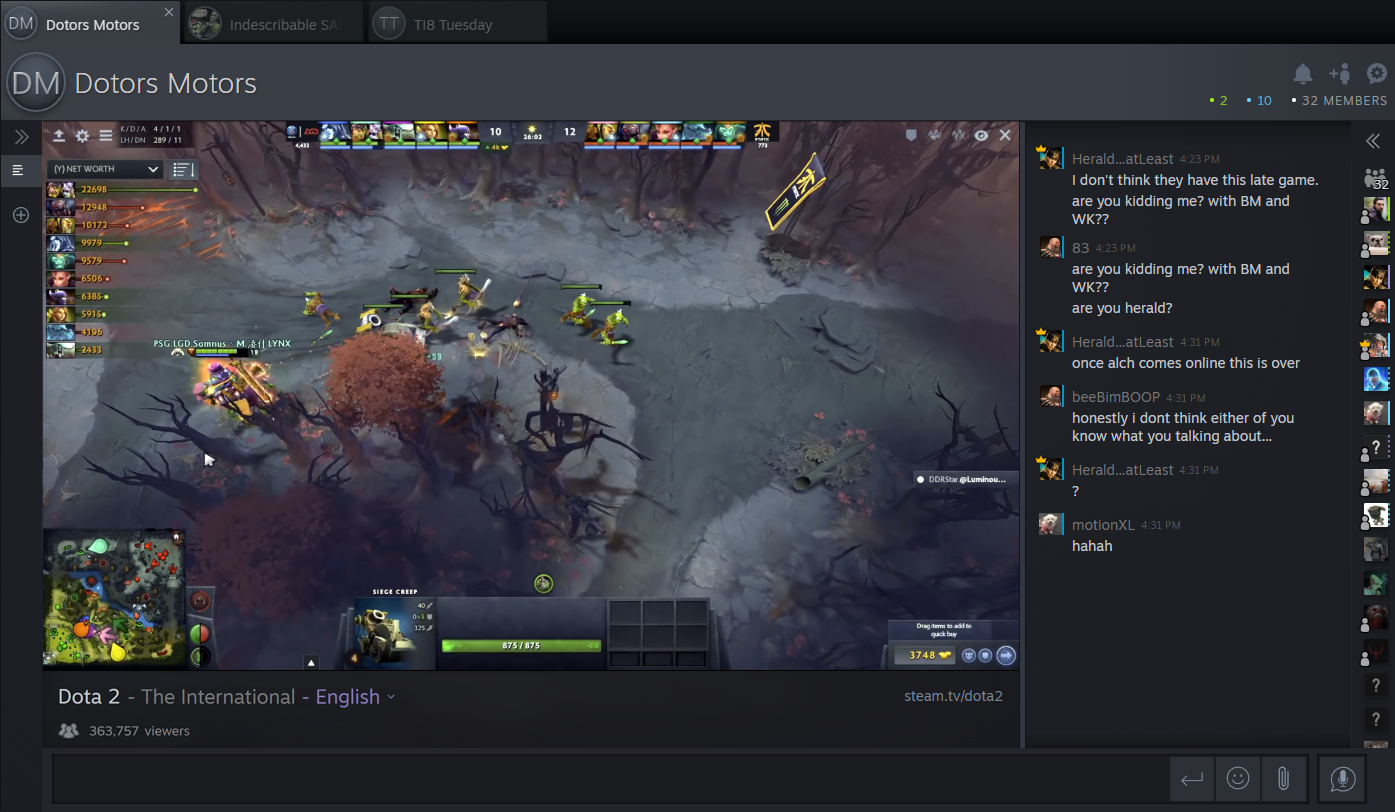Twitch Gets a New Rival in Valve's Steam.TV
Valve kicked off The International 8, the latest of its annual Dota 2 tournaments that offer record-breaking prize pools year after year, on August 20. But this year's tournament brought more than just tens of millions of dollars in prize money: it'salso introduced an updated Steam Broadcasting. The newly improved platform is called Steam.TV, and it could become Valve's response to livestreaming services like Twitch.
Steam.TV's primary selling point is the ability to watch The International 8 with groups of friends instead of with everyone who tunes in--though you can also stick to the general chat if you prefer. Valve calls the feature Watch Party, and it's the latest attempt to recreate the experience of watching something esports-related with friends online, similar to how millions of people gather in-person for real sports.
This demand for watching with friends isn't exclusive to esports. People have been trying to figure out the best way to watch Netflix, Hulu and YouTube with their friends almost since the services debuted. The frustration of not being able to watch the same thing as your buddies is exacerbated with esports though because it means the most exciting moments of a match could reach everyone at different times. That desynchronization really kills the vibe.
Watch Party isn't the only feature with which Steam.TV is debuting. Valve also created some tools specifically for The International 8:
"[Y]ou’ll see markers for match starts, first bloods and team-fights populating the timeline as you watch live. We’ve also updated Steam Broadcasting with a new Live DVR feature, making rewind available as soon as you join the stream and allowing you to smoothly jump back and forth through the action. Combined with this custom Dota 2 Steamworks integration, you won’t miss a second of the action."
These updates mimic the features traditional sports fans have been able to use for a while now. Who doesn't like catching instant replays of particularly exciting moments, skipping past the boring parts to get right into the action, or being able to watch the start of a game even if you're tuning in late? It's much easier to appreciate a live DVR than a video-on-demand (VOD) hours after the broadcast ends.
Right now, Steam.TV only broadcasts The International 8 (or a near-deafening endless loop of an instrumental track when no matches are occurring). Valve said that will change in the future, touting plans to "extend Watch Party support for all games that are broadcasting on Steam and expose a new broadcast Steamworks API to Steam partners." Dota 2's premier tourney happens to be the perfect test for the service.
Get Tom's Hardware's best news and in-depth reviews, straight to your inbox.
It's not hard to imagine Valve pitching Steam.TV as the best way to broadcast esports. Right now, many events default to Twitch, some use YouTube and others have even tapped Facebook Live, much to the chagrin of many esports fans. But as Twitch removes certain incentives--the company announced on August 20 that Twitch Prime members would soon see ads again--Valve might have an opportunity to seize.
Additional features, like Watch Party and Live DVR, only make Steam.TV more appealing. If Valve is able to offer streams with a higher bitrate and convince enough developers to use the platform, it could easily become a favorite among esports fans. Many have come to realize that Twitch's maximum bitrate isn't really high enough to support streams at a 1080p resolution, and VODs especially can look blurry and have washed-out colors.
Moving in on Twitch's territory would also fit Valve's recent efforts to make Steam more central to gamers' lives. The most notable example is when the company recently seemingly took inspiration from many of Discord's features with an updated Steam Chat. Between competing with Discord and updating Steam.TV, it seems like Valve intends to make Steam far more than just a games marketplace.

Nathaniel Mott is a freelance news and features writer for Tom's Hardware US, covering breaking news, security, and the silliest aspects of the tech industry.
-
Zaporro How is this a "release" if all it does is show some idiotic dota tournament?Reply
Neverthless, with steam chat integration it looks nice, hopefully they wont limit stream bitrate to some retarded arbitrary value like Twitch does with 6000kbps - let's face it, for present times, limiting stream bitrate to anything less than 20000kbps is a joke.
And hopefully they will allow streaming with 3rd party tools like OBS.
Then, this steam.tv will be one hell of a deal! -
phrolox yes please!! someone show twitch the door. I'm tired of putting up with twitch's poor interface, video quality and having to switch off chatReply
